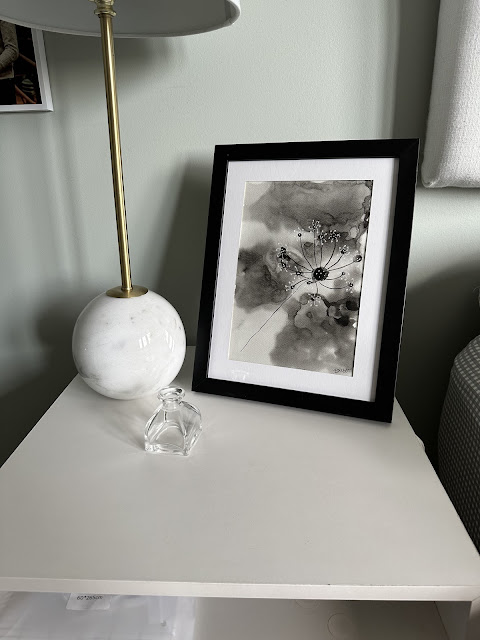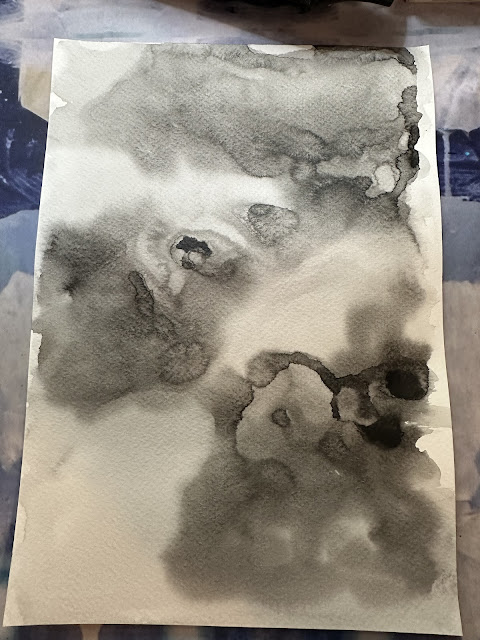Are you ready to take your watercolor art to the next level? With the timeless elegance of monochrome, you can create stunning black-and-white masterpieces that will captivate your audience. In this step-by-step guide, we will explore the art of monochrome watercolor and show you how to master this technique.
Using only shades of black and white, monochrome watercolor allows you to focus on the interplay of light and shadow, adding depth and dimension to your paintings. Whether you're a beginner or an experienced artist looking for a new challenge, this guide will provide the tools and techniques you need to create breathtaking monochrome watercolor artwork.
We'll cover everything from selecting the right materials and understanding the principles of value and contrast to creating realistic textures and capturing the essence of your subject. With practice and perseverance, you'll soon be able to create beautiful monochrome watercolor paintings that showcase your unique artistic style.
Join me and these other wonderful crafting bloggers as we explore monochrome in various mediums.
Get ready to unleash your creativity and dive into the world of monochrome watercolor. Let's begin your journey to master this captivating art form.
Materials needed for monochrome watercolor painting
When it comes to monochrome watercolor painting, the materials you choose can significantly affect the overall quality and aesthetic of your artwork. Selecting the right paper, brushes, and paints is crucial to achieving the desired effects and creating stunning black-and-white masterpieces. Let's explore the essential materials you'll need to get started.
The foundation of any monochrome watercolor painting is the paper. Opt for a high-quality, cold-pressed watercolor paper that can withstand the multiple layers of washes and techniques you'll use. Look for paper with a slightly textured surface, as it will help create exciting and nuanced effects. The paper should weigh at least 300 gsm, ensuring it can handle the amount of water and pigment you'll be applying without buckling or warping.
Next, choose a versatile set of watercolor brushes that will allow you to achieve a range of mark-making and textures. Various brush sizes and shapes, such as round, flat, and filbert, will give you the flexibility to tackle different elements of your composition. Invest in good-quality synthetic or natural hair brushes that can hold a substantial amount of pigment and water, allowing you to work efficiently and with control.
When it comes to paints, the classic choice for monochrome watercolor is black and white. Look for high-quality black watercolor paint, such as ivory black or lamp black, which provides a rich, deep tone for your shadows and outlines. Opt for titanium white or zinc white, which offers a crisp, opaque coverage. Consider a neutral gray or sepia tone to add depth and nuance to your paintings.
Inspiration from famous monochrome watercolor artists
As you embark on your journey into the world of monochrome watercolor painting, it's essential to draw inspiration from the masters of this captivating art form. By studying the techniques and styles of renowned monochrome watercolor artists, you can gain valuable insights and discover new ways to approach your creative process.
One of the most celebrated monochrome watercolor artists is the renowned British painter John Singer Sargent. Known for his stunning portraits and landscapes, Sargent's monochrome watercolor works are famous for their masterful use of light and shadow. His paintings, such as "Cashmere" and "Simplon Pass," showcase his ability to capture the essence of a scene using only shades of black and white. Sargent's attention to detail and his command of value and contrast are genuinely inspiring.
Another influential figure in monochrome watercolor is the American artist Andrew Wyeth. Wyeth's haunting and atmospheric paintings, such as "Christina's World" and "Trodden Weed," are renowned for their poignant and introspective qualities. His use of muted tones and subtle gradations creates a sense of melancholy and introspection, inviting the viewer to delve deeper into the scene's emotional resonance.
Japanese artist Hiroshi Yoshida is also a master of monochrome watercolor painting. His landscapes, such as "Mount Fuji" and "Karuizawa," are characterized by their elegant simplicity and the masterful interplay of light and shadow. His paintings often feature a minimalist approach, focusing on the essential elements of the scene and allowing negative space to play a crucial role in the overall composition.
By studying the work of these renowned monochrome watercolor artists, you can gain a deeper understanding of the principles and techniques that underpin this captivating art form. Observe how they use value, contrast, and texture to create a sense of depth and atmosphere, and consider how you can incorporate these elements into your own paintings. Embrace the timeless beauty of monochrome watercolor and let the work of these masters inspire you to push the boundaries of your artistic expression.
Step-by-step guide to creating a monochrome watercolor painting
Now that you've gathered the necessary materials and drawn inspiration from the masters of monochrome watercolor, it's time to embark on your own creative journey. This step-by-step guide'll walk you through creating a stunning black-and-white watercolor painting, from the initial planning stages to the final touches.
1. Choose a subject and reference material:
The first step in creating a monochrome watercolor painting is to select a subject that will lend itself well to the medium. Consider subjects with solid contrasts, exciting textures, and a focus on shapes and forms rather than color. Depending on your preference and the level of detail you wish to capture, you may want to work from a photograph or a live subject. I chose to paint a flower that is going to seed. There are many inspirational flowers in my garden right now!
2. Sketch and plan your composition:
Before you begin painting, take the time to sketch out your composition and plan the placement of the various elements. This will help you visualize the final painting and ensure that the balance and flow of the composition are well-executed. Pay close attention to the placement of the focal point and the use of negative space to create a visually striking and cohesive image. While this is a good rule of thumb, I did not need to do a sketch for this painting.
3. Prepare your paper and palette:
Once you've finalized your composition, it's time to prepare your materials. Start by taping or stretching your watercolor paper onto a sturdy surface, ensuring it's smooth and taut. Next, mix your black and white paints on your palette, creating a range of values from pure white to deep black. Experiment with different ratios and combinations to achieve the desired tones and shades. For this painting, after taping down my paper, I brushed water across the entire paper and added drops of black paint. I allowed this paint to spread naturally. I let the paper dry most of the way but added water and paint drops where I felt more was needed. Let dry completely.
4. Begin with a value sketch:
Before you start painting, create a quick value sketch using only shades of gray. This will help you establish the overall tonal balance and identify the key areas of light and shadow in your composition. Use a soft pencil or a gray watercolor wash to block in the main shapes and values, ensuring you have a solid foundation to build on. For me, I let the swirls of black paint create their own values. That saved me a step in the process!
5. Apply the initial washes:
With your value sketch as a guide, apply the initial black and white paint washes to your paper. Start with the lightest areas, gradually building up the darker tones and shadows. Remember to work quickly and decisively, allowing the paint to flow and blend naturally on the paper. Keeping the initial layers manageable can lead to muddy or overworked areas. Using the wet-on-wet method I used above, it is easy to overdo it because watching the paint swirl is so much fun!
6. Develop the details and textures:
As your painting takes shape, start refining the details and textures. Use a variety of brushstrokes, from broad washes to delicate lines and stippling, to create a sense of depth and interest. Experiment with techniques such as dry-brushing, sponging, or even scratching into the paint to achieve unique and compelling effects. When the paper was completely dry, I used jet-black paint on top of the dried swirls.
7. Finalize the painting:
Focus on the finishing touches in the final stages of your monochrome watercolor painting. Evaluate your composition's overall balance and contrast, making any necessary adjustments to the values and tones. Consider adding subtle details or accents, such as highlights or soft edges, to enhance the depth and realism of your painting. Finally, step back and enjoy the stunning black-and-white masterpiece you've created. I used a felt tip pen and a white pen to add depth and interest to the overall piece.
Remember, mastering monochrome watercolor is an ongoing process, and each painting will offer new challenges and opportunities for growth. Embrace the process, experiment with different techniques, and, most importantly, have fun as you explore the captivating world of black-and-white watercolor painting.
Conclusion: The beauty and versatility of monochrome watercolor painting
As you've discovered through this step-by-step guide, the art of monochrome watercolor painting is a truly captivating and rewarding pursuit. By focusing on the interplay of light and shadow, value and contrast, you can create stunning black-and-white masterpieces that evoke a sense of timeless elegance and emotional resonance.
The beauty of monochrome watercolor lies in its simplicity and versatility. With just a few shades of black and white, you can explore various subjects, from dramatic landscapes and architectural studies to delicate botanical illustrations and expressive portraits. The absence of color allows you to concentrate on the fundamental elements of art, such as shape, texture, and composition, resulting in visually striking and significant paintings.\
Moreover, the monochrome approach offers a unique challenge that can push you to develop your technical skills and creative vision. As you experiment with different brushstrokes, layering techniques, and textural effects, you'll discover new ways to express your artistic voice and create paintings that are truly your own. The journey of mastering monochrome watercolor is one of constant learning, experimentation, and personal growth, making it a gratifying and fulfilling pursuit.
Whether you're a beginner or an experienced artist, the world of monochrome watercolor painting is waiting to be explored. Embrace the timeless elegance of black and white, and let your creativity soar as you create stunning masterpieces that captivate and inspire. With dedication, practice, and an open mind, you'll soon be well on your way to mastering this captivating art form.
















This painting is so beautiful Terri. I've been playing with watercolours a lot more recently so these tips and ideas are really useful, thank you.
ReplyDeleteWhat a gorgeous piece of art! I would love to learn more about watercolor! Thank you for sharing your techniques! pinning -Marci @ Old Rock Farmhouse
ReplyDeleteI believe the artist in you came out with this monochrome sustainable challenge, Terri! Thanks for going into detail about monochrome artwork! It's amazing what you can create with a felt pen! You've certainly mastered it with your lovely creation!
ReplyDeleteThis painting is so classy, I love the little white highlight details you added afterwards too, they add such a lovely extra dimension to the piece.
ReplyDeleteI really love your monochrome painting! It turned out so nice! It's really great to be able to create your own art for you home. I'm going to share this idea with my daughter. When it comes to drawing and painting, she's a much better artist than I am! Thanks for sharing!!!
ReplyDeleteYour monochrome watercolor artwork looks wonderful! The techniques should be easy enough for anyone to accomplish following your tutorial.
ReplyDelete